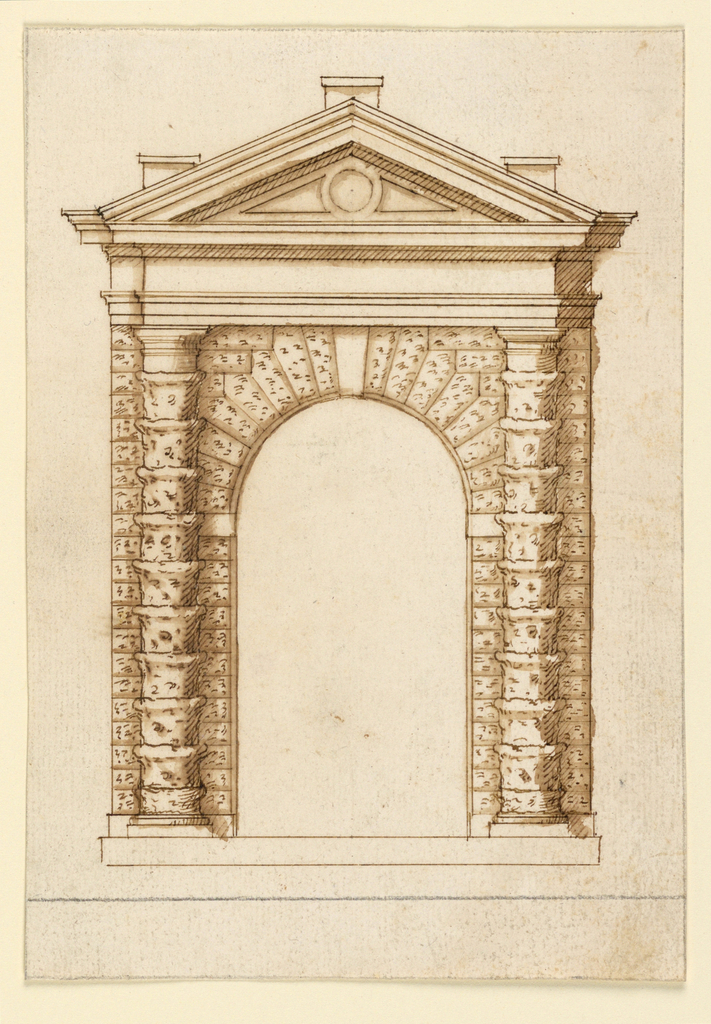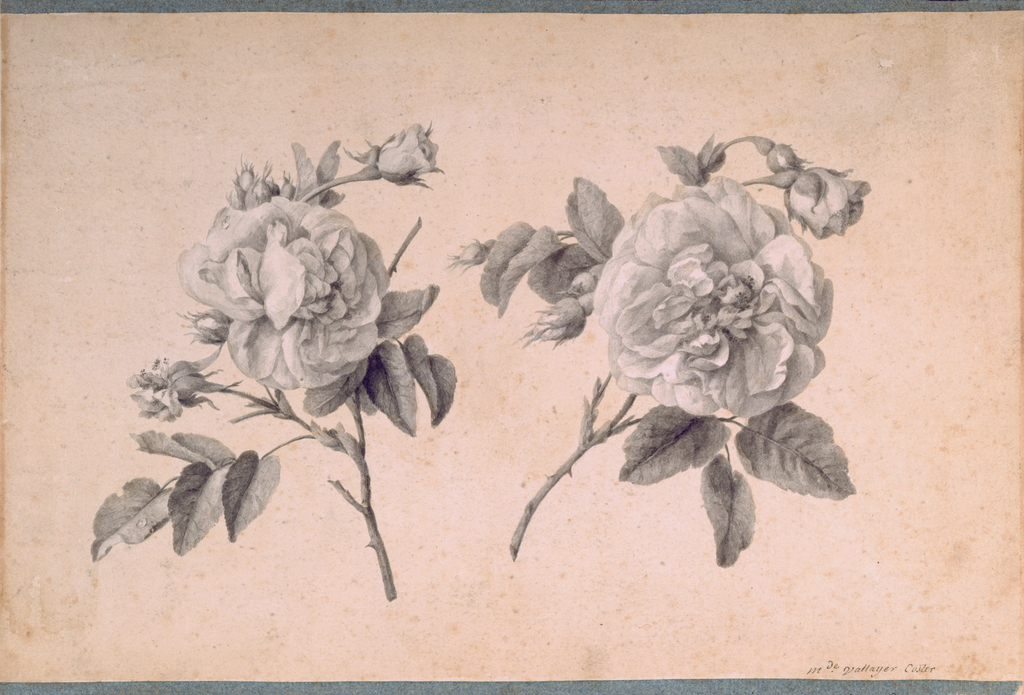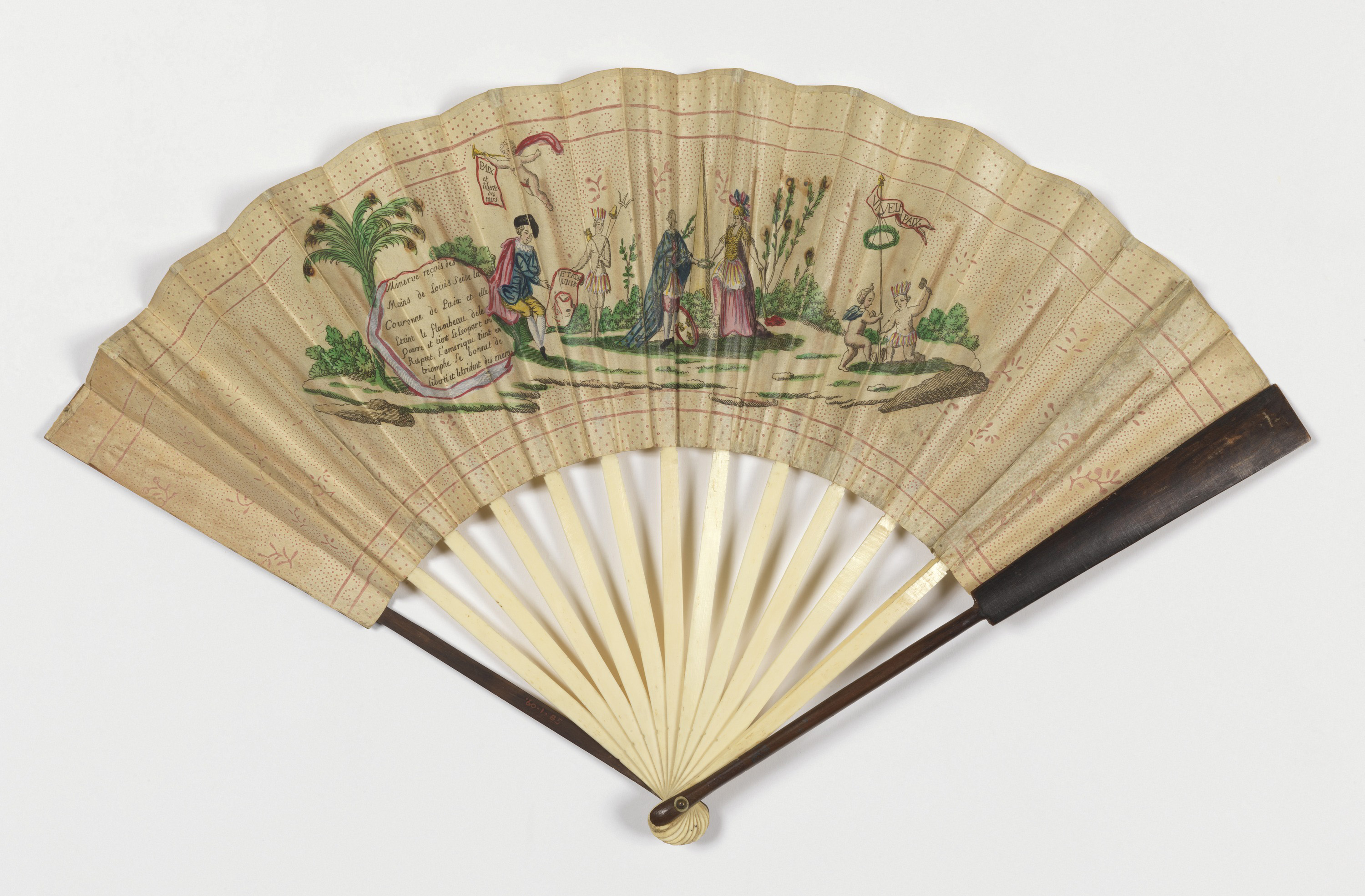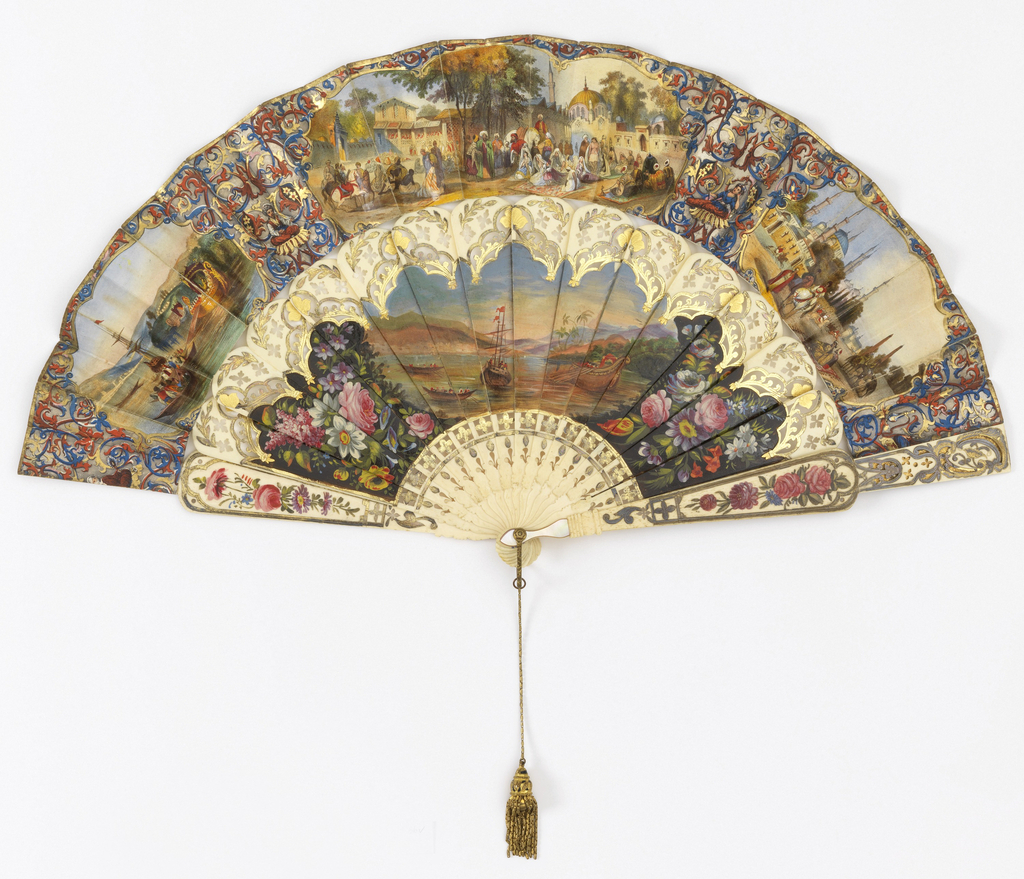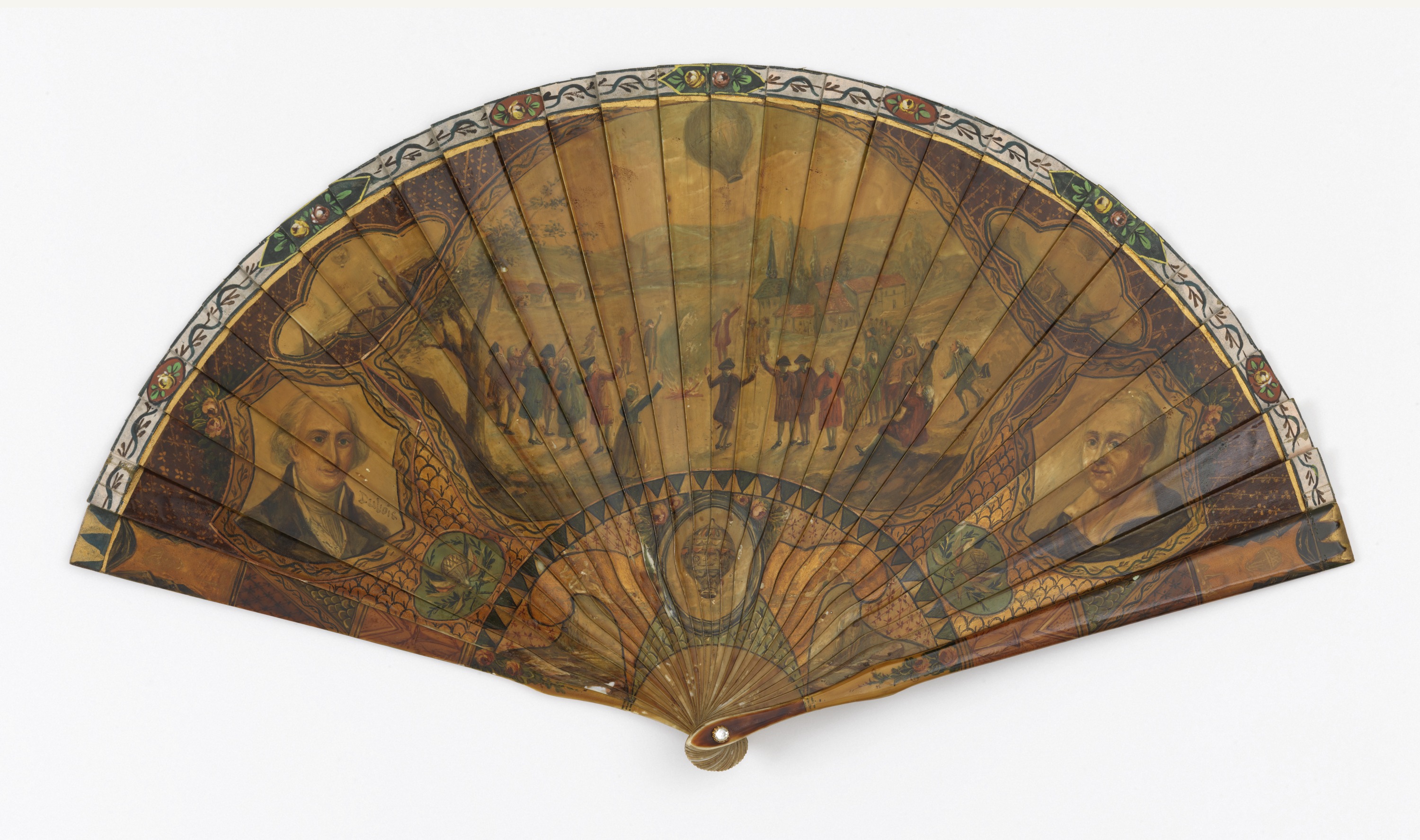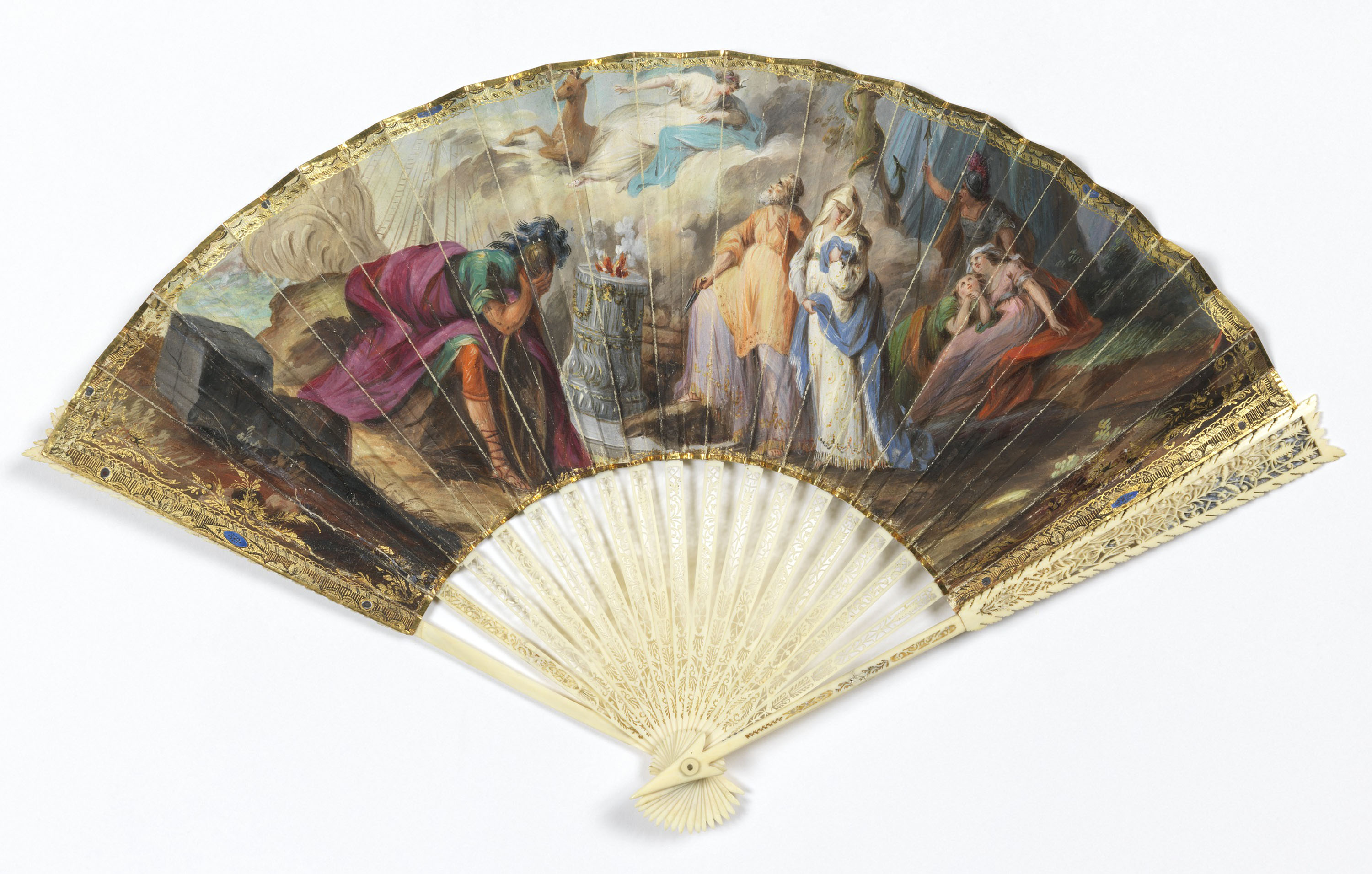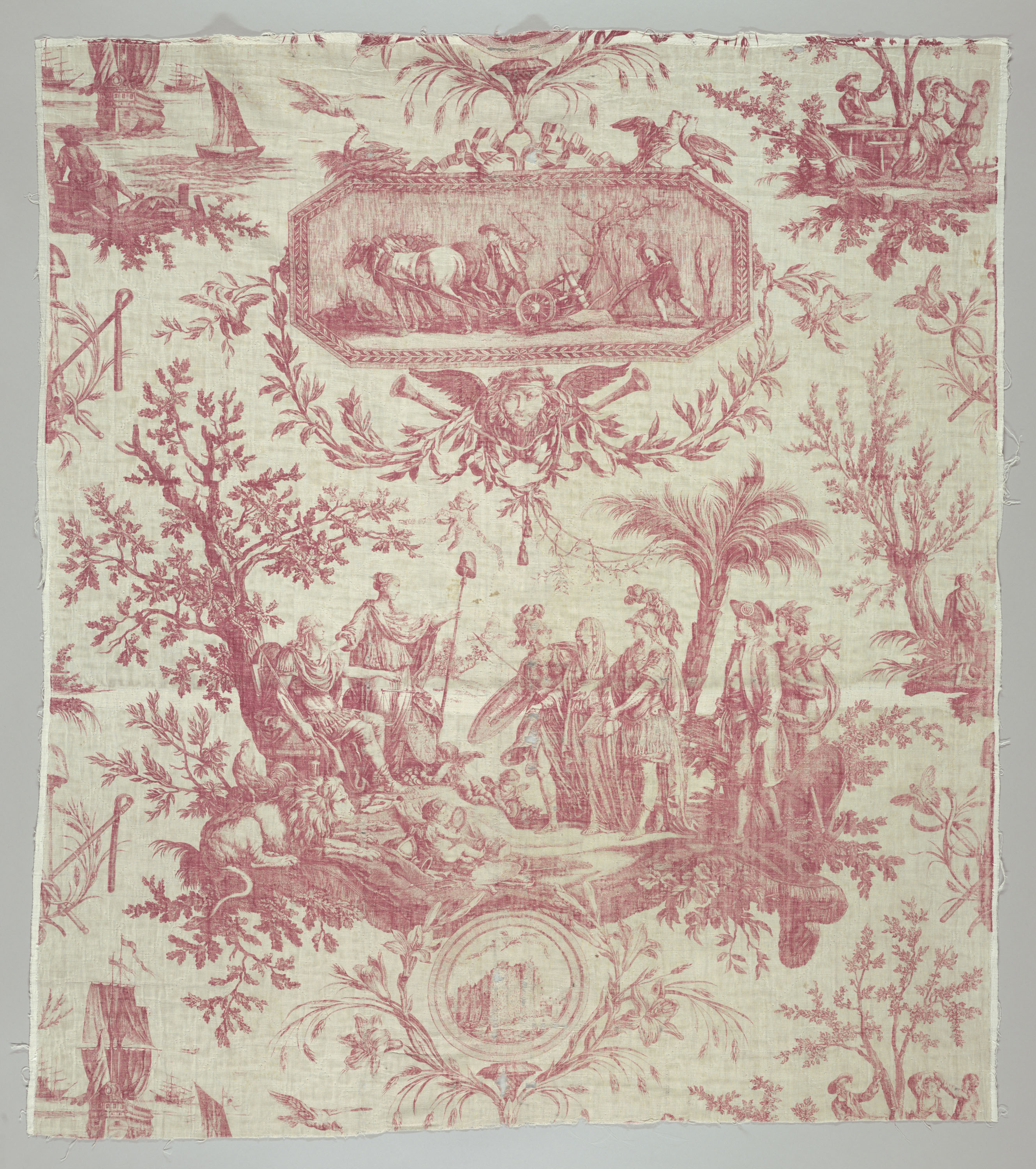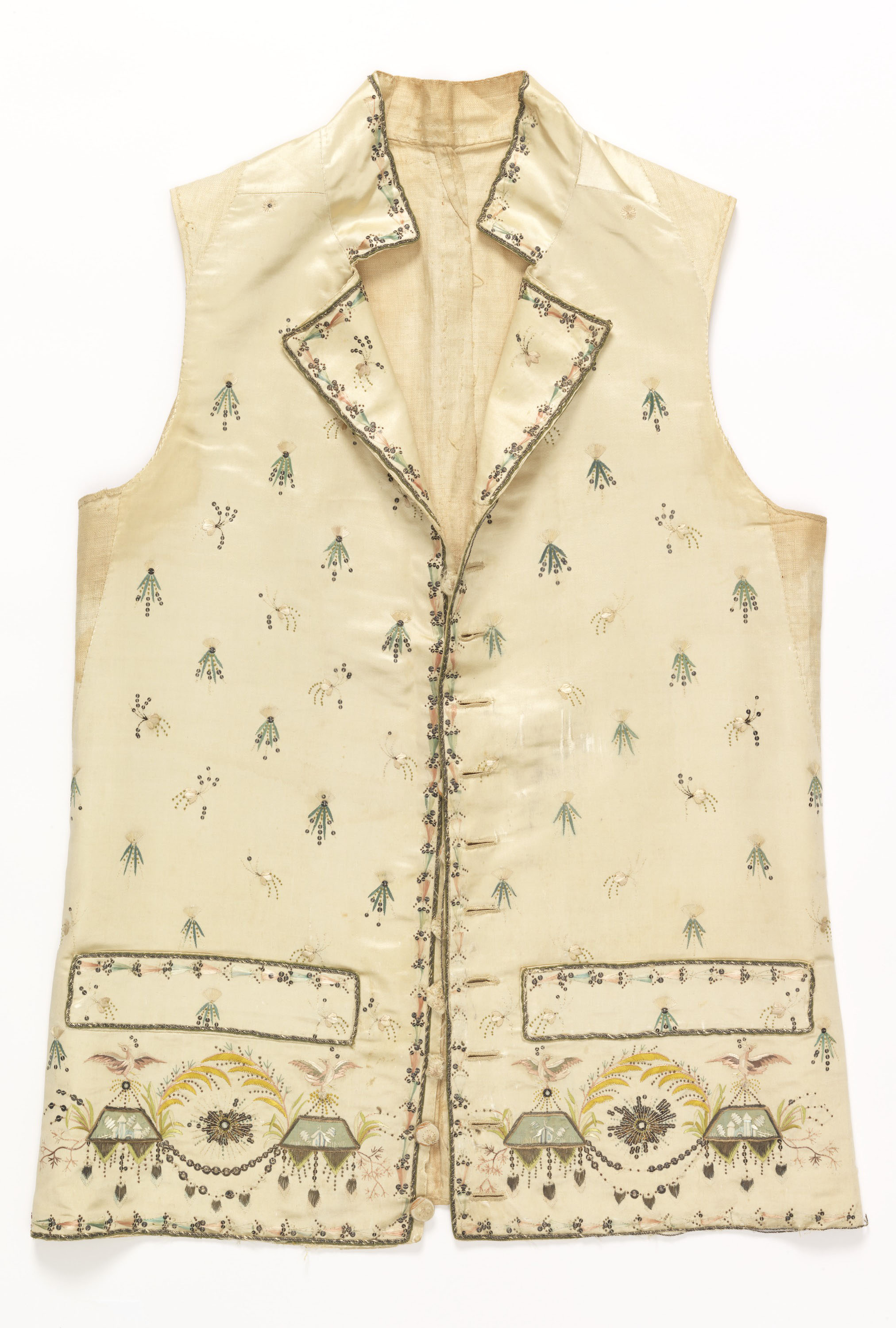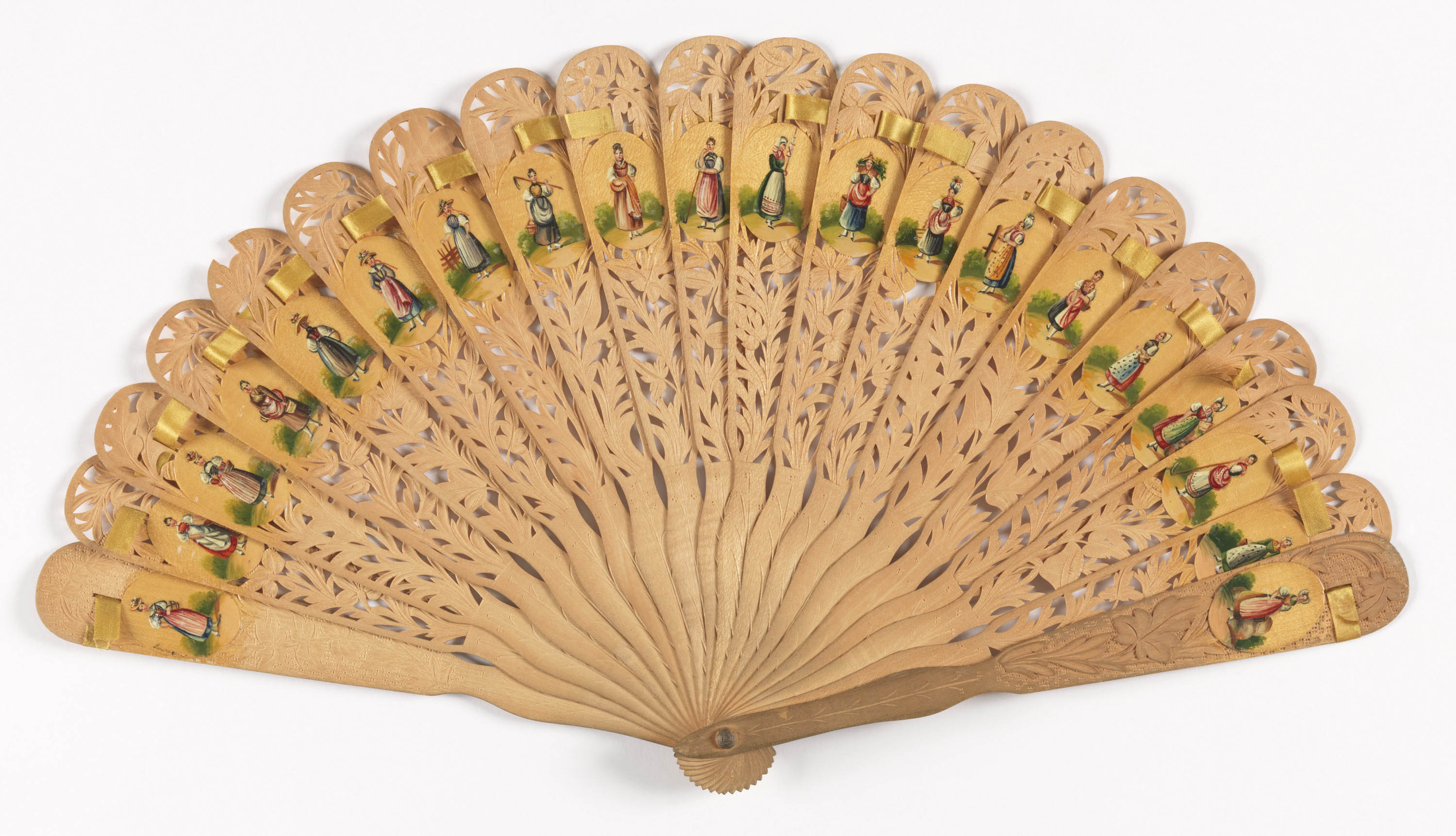Rusticated masonry was first used in the classical world. It is characterized by stones cut with a deliberately rough surface, and wide sunken joints between blocks. The Ancient Romans typically employed coarse stone in public structures such as city walls and aqueducts. However, during the reign of Emperor Claudius (41 – 54 C.E.), rusticated stonework...
In celebration of Women’s History Month, Cooper Hewitt is dedicating select Object of the Day entries to the work of women designers in our collection. Two delicate roses nestle on a creamy ground. Although drawn in grisailles, a monochromatic pallet of grays and black, the flowers achieve an astonishing realism. Anne Vallayer-Coster was a master...
This fan commemorates in an interesting moment in early American foreign policy. During the eighteenth century, amidst the feverish rivalries of the European state system, various nations competed to dominate the world’s oceans. After the United States achieved independence, its political leaders championed the view that the seas should be free and common to all...
This fan’s printed scenes of the Ottoman Empire are after the English architect and landscape painter Thomas Allom (1804-1872), whose drawings were engraved and published in the 1840 book, Constantinople and the Scenery of the Seven Churches of Asia Minor. [1] The center image is of the Arut Bazaar, a female slave market in Constantinople....
This fan commemorates the Montgolfier brothers Joseph-Michel Montgolfier (left, 1740-1810) and Jacques-Étienne Montgolfier (right, 1745-1799), inventors the globe aérostatique (hot air balloon). The central scene shows the brothers’ first public experiment, which took place in Annonay, France on June 4th, 1783 in front of a group of state representatives. That day, a balloon inflated with...
The subject of this fan is an episode from the Ancient Greek myth of the Trojan War. Agamemnon has vowed to sacrifice his daughter Iphigenia to appease Artemis, whose wrath he incurred by killing deer in a sacred grove. This fan illustrates the dramatic moment when the goddess takes pity on the girl and at...
It is with the perfect vision of hindsight that we can perceive the dramatic irony embedded in this textile, printed at the heart of the French Revolution. The intended message is announced on a banderole held aloft by a putto: Louis XVI is the Restorer of Liberty, a title briefly bestowed on him by the...
The light color palette and spare decoration of this waistcoat are typical of the neoclassical style, which dominated design in the late eighteenth century and early nineteenth century. The silhouette is tight-fitting and markedly angular, with the lower hem cut straight across and rectangular pocket plackets. This was a departure from the skirted waistcoats with...
During the nineteenth century, many European nations endeavored to define their cultural identities and to establish national histories. This romantic nationalism was characterized by a nostalgia that fueled an interest in historic folk customs. Peasants were commonly viewed as synonymous with nationhood and peasant costumes were the subject of interest and national pride. This fan,...
